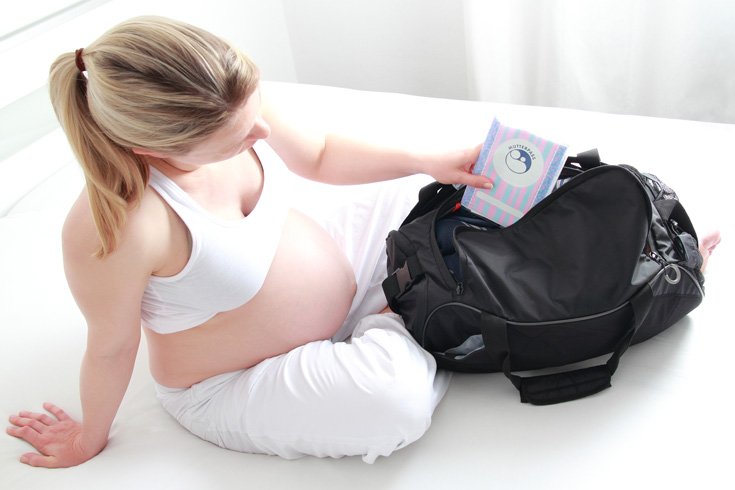

First and foremost, any form of body exercise during pregnancy is important to the health of the mother and child. Pregnancy yoga works great for pregnancy and it has been used for a long time to relax the person’s mind and relieve stress. Practicing yoga and stretching the muscles for birth, labour and delivery would be easier. Ensuring a healthy baby is every pregnant woman?s dream and yoga helps you do just that.
How Soon Should You Start Pregnancy Yoga
Yoga has various postures or exercise that works great on women’s health during pregnancy. Varying widely in application and style, these exercises (postures) gently stretch and explore all parts of your body.
Different yoga positions have been tested by yoga teachers as safe for you to try starting from 14 weeks of pregnancy. That’s when most yoga teachers recommend you start doing yoga. As your belly grows bigger, you may need to modify some poses. If any of them become uncomfortable for you, stop doing them.
What Are The Benefits Of Yoga For Pregnancy
All types of exercise can be beneficial to pregnant women, and specifically yoga can be very beneficial as it is completely safe, with a few modifications and precautions. Antenatal yoga is also beneficial because it helps you learn to breathe deeply and relax, which will come in handy as you face the physical demands of labour, birth, and motherhood.
- Releases Stress And Tensions Pregnant women often feel stressed however; prenatal yoga is very good for tension and stress release. With regular practice of prenatal yoga, you will feel better able to handle stress.
- Union Of Physical, Emotional and Spiritual Growth Yoga for pregnant women motivates women to go within and listen to their bodies, calms their mind and develops the intuition and innate wisdom that lies within each of them. The body knows how to move, and it will tell you what you want: movement or stillness. Yoga helps women to honour where they are at each given minute.
- Breathing Techniques Is Learned Breathing techniques are essential for working through different yoga positions and it is another benefit you?ll get from pregnancy yoga. Deep breathing calms the mind and spirit, so seeking this relaxed state will ease each transition of pregnancy. Additionally, understanding how to use breath to manage pain, tension and stress will be helpful during labour and childbirth.
- Prevents Oedema And Joint Inflammation Swelling and inflammation is caused by poor blood circulation and water retention. Since yoga helps promote proper blood circulation, it is useful in preventing and reducing inflammations. This reduces the common swelling of the ankles, feet and hands.
- It Will Prepare You For Giving Birth A habitual practice of pregnancy yoga helps tone muscles of your pelvic floor and is effective in gaining strength to remain comfortable in a certain position. This is an integral part of any yoga program as it helps to familiarise you with these very useful muscles. Even if you choose not to squat during labour, you will want to be able to use these muscles efficiently and effectively when nature calls upon you to push your baby into the world.
- Yoga Meditation Finally, the most important thing you can give to yourself and your growing baby is the time (even if it’s 5-10 minutes) to connect in feeling with yourself and your child whether sitting quiet in meditation. Take the time to honour and relish in each exquisite, sacred moment of pregnancy. In the end, you and baby will be happier and healthier because of it.
How To Find A Yoga Instructor
It is important to find a yoga class and instructor that feel right for you. It is important to ask for references of students who participated in the same program. Don’t hesitate to ask your potential yoga instructor about her experience and credentials, the format she uses, or the intention of the class. Look for an instructor who is specifically trained in prenatal yoga, but if that’s not possible, make sure your instructor knows you’re expecting.
Additional Tips And Precautions Of Pregnancy Yoga
Remember to consult your health care provider before starting a pregnancy yoga class, and to take it slowly, you don’t want to do too much at one time and possibly hurt yourself or the baby inside your womb. If you’ve been practicing yoga for some time, recognize that you will not be able to perform some of your normal routine as your pregnancy advances.
Avoid positions that stretch the muscles too much, particularly the abdominals. When practicing twisting poses, twist more from the shoulders and back than from the waist, to avoid putting any pressure on your abdomen. In addition, certain poses are not recommended for pregnant women, especially abdominal twists, inversion poses, and deep bends.
Make sure you stay hydrated during your prenatal yoga classes. You should plan to bring your own water bottle to class and, unless instructed otherwise, the bottle should be close to empty by the end of the class. Make sure you drink lots of water after the class is over too.
Moreover, listen carefully to your body. If you feel any discomfort, stop. You will probably need to modify each pose as your body changes.






















